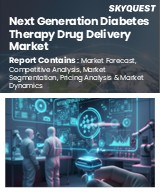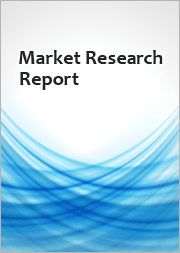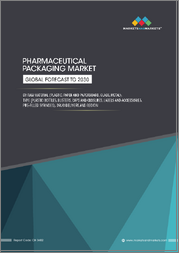
|
시장보고서
상품코드
1847086
아시아태평양의 영상 유도 약물전달 시장 : 기술 유형별, 용도별, 최종사용자별, 국가별 - 분석과 예측(2025-2035년)Asia-Pacific Image-Guided Drug Delivery Market: Focus on Technology Type, Application, End User, and Country Analysis - Analysis and Forecast, 2025-2035 |
||||||
아시아태평양의 영상 유도 약물전달 시장 규모는 2024년 390만 달러에서 2035년에는 1억 7,580만 달러에 달할 것으로 예상되며, 예측 기간인 2025-2035년 동안 41.74%의 CAGR을 기록할 것으로 예상됩니다.
아시아태평양에서는 영상 유도 약물전달(IGDD)이 종양이나 신경 부위를 포함한 질병 부위에 치료제를 직접 전달하기 위해 고도의 정밀도에 초점을 맞춘 최소침습적 기술을 사용합니다. 이 혁신적인 접근 방식은 기존의 전신 요법에서 보다 안전하고 국소적인 환자 맞춤형 치료법으로의 전환을 의미합니다. 카테터, 캐뉼라 등 특수 전달 도구를 MRI, CT, 초음파 등 영상 플랫폼과 통합하고 로봇 공학 및 AI 유도 내비게이션으로 강화함으로써, IGDD는 임상의가 화학요법, 유전자 치료, 세포 기반 치료를 탁월한 정확도로 수행할 수 있게 해줍니다. 이 방법은 치료 결과를 향상시키고, 전신 독성을 줄이고, 회복을 가속화하며, 의료 효율성을 최적화하여 IGDD를 아시아태평양 정밀 의료의 핵심으로 자리매김하고 있습니다.
| 주요 시장 통계 | |
|---|---|
| 예측 기간 | 2025-2035년 |
| 2025년 평가 | 540만 달러 |
| 2035년 예측 | 1억 7,580만 달러 |
| CAGR | 41.74% |
시장 소개
아시아태평양의 영상 유도 약물전달(IGDD) 시장은 이 지역의 정밀의료에 대한 수요 증가와 첨단 영상 유도 약물전달 기술의 발전으로 인해 빠르게 성장하고 있습니다. 이 방법은 기존의 전신 약물요법을 대체할 수 있는 보다 안전하고 환자 특이적인 치료법을 제공함으로써 전신 독성을 낮추면서 치료 성적을 향상시킬 수 있습니다.
아시아태평양에서는 종양학, 신경학, 재생의학이 IGDD의 중요한 응용 분야입니다. 암 발병률이 증가함에 따라 종양학이 시장을 독점하고 있습니다. 카테터, 캐뉼라와 MRI, CT, 초음파 등의 이미징 플랫폼이 통합되고, 로봇과 AI를 활용한 내비게이션이 지원함으로써 치료자는 화학요법제, 유전자 치료제, 세포기반 치료제를 보다 높은 정밀도와 제어성으로 전달할 수 있게 되었습니다.
인구 고령화, 만성질환 유병률 증가, 새로운 의료시설의 개발, 첨단 대체치료에 대한 지식의 증가는 이 지역의 성장을 촉진하는 요인 중 일부입니다. 인도, 동남아시아 등 신흥 경제 국가들이 큰 발전 가능성을 보이고 있는 가운데, 중국, 한국, 일본, 호주 등 신흥 경제 국가들이 채택을 촉진하고 있습니다.
아시아태평양의 IGDD 시장은 높은 비용, 복잡한 규제, 기술적 제약 등의 장애물에도 불구하고 상당한 성장이 예상되며, 영상 유도 약물전달은 이 지역에서 차세대 정밀의료의 핵심 요소로 자리매김하고 있습니다.
시장 세분화
세분화 1 : 기술 유형별
- 약물전달 시스템
- 영상 유도 플랫폼
세분화 2 : 용도별
- 종양학
- 신경학
- 기타
세분화 3 : 최종사용자별
- 병원
- 제약 및 바이오기술 기업
- 개발업무수탁기관(CRO)
- 연구기관·대학
세분화 4 : 지역별
- 아시아태평양
- 일본
- 인도
- 중국
- 호주
- 한국
- 기타
아시아태평양의 영상 유도 약물전달 시장 동향 및 촉진요인 및 과제
시장 동향
- 기술 통합 : 아시아태평양에서 MRI, CT, PET, 초음파 등 영상 진단과 첨단 약물전달시스템의 결합이 증가하고 있습니다.
- 최소침습수술 : 최소침습 수술에 대한 선호도가 높아지면서 회복시간과 치료 결과가 개선되고 있습니다.
- AI와 로봇 공학 : AI 유도 내비게이션과 로봇 보조 전달 시스템의 도입으로 치료의 정확성과 정밀도가 향상되고 있습니다.
- 맞춤형 의료 : 환자 맞춤형 치료에 대한 관심이 높아짐에 따라 표적화된 약물전달 방법의 채택이 촉진될 것입니다.
- 디지털 헬스케어의 확장 : 원격의료 및 디지털 헬스 플랫폼과의 통합을 통해 IGDD 치료의 모니터링 및 제어를 향상시킬 수 있습니다.
시장 촉진요인
- 만성질환 유병률 증가 : 암, 신경질환, 기타 만성질환의 유병률 증가는 표적 치료제에 대한 수요를 증가시킬 것입니다.
- 인구 고령화 : 일본, 중국, 한국 등의 국가에서 노인 인구가 증가함에 따라 첨단 약물전달 솔루션의 필요성이 높아지고 있습니다.
- 헬스케어 인프라의 성장 : 병원, 암 전문 센터, 진단 시설의 확대로 IGDD의 도입이 촉진될 것입니다.
- 정부의 노력 : 지원 정책, 헬스케어 혁신에 대한 자금 지원, 의료 연구 프로그램이 시장 성장을 가속화할 것입니다.
- 기술 발전 : 이미징, 약물전달 기기, AI 지원 플랫폼의 끊임없는 개선으로 치료의 효과와 안전성이 향상되고 있습니다.
시장의 과제
- 높은 비용 : IGDD 시스템의 초기 투자 및 유지보수 비용은 소규모 의료시설의 경우, 고비용이 될 수 있습니다.
- 규제 복잡성 : 아시아태평양 국가의 다양한 규제를 헤쳐나가는 것은 시장 진입과 채택을 지연시키는 요인으로 작용합니다.
- 기술적 한계 : 영상 양식과 약물전달 시스템의 통합은 복잡하고 정확도에 영향을 미칠 수 있습니다.
- 낮은 인지도 : 신흥시장에서는 환자와 임상의의 인지도가 낮아 보급에 걸림돌로 작용하고 있습니다.
- 데이터 프라이버시 및 보안 : 기밀성이 높은 이미지 데이터를 다루기 위해서는 아시아태평양 국가의 데이터 보호법을 엄격하게 준수해야 합니다.
제품/혁신 전략 : 이 보고서는 영상 유도 약물전달 분야의 최신 기술 발전에 대한 깊은 인사이트를 제공하여 기업이 혁신을 촉진하고 시장 요구에 맞는 최첨단 제품을 개발할 수 있도록 돕습니다.
성장/마케팅 전략 : 종합적인 시장 분석을 제공하고 주요 성장 기회를 파악하여 기업이 타겟팅된 마케팅 전략을 수립하고 시장에서의 입지를 효과적으로 확장할 수 있는 지식을 제공합니다.
경쟁 전략 : 경쟁 상황에 대한 철저한 분석을 통해 경쟁사의 강점과 약점을 파악하여 시장에서의 경쟁우위를 확보하기 위한 효과적인 전략수립을 지원합니다.
규제 및 컴플라이언스 전략 : 진화하는 규제 프레임워크, 승인 및 업계 가이드라인에 대한 최신 정보를 제공하여 기업이 컴플라이언스를 준수하고 새로운 영상 유도 약물전달의 시장 진입을 가속화할 수 있도록 지원합니다.
투자 및 사업 확장 전략 : 시장 동향, 자금 조달 패턴, 제휴 기회를 분석하여 기업이 정보에 입각한 투자 결정을 내리고, 사업 성장을 위한 잠재적인 M&A 기회를 파악할 수 있도록 지원합니다.
목차
주요 요약
제1장 시장 : 업계 전망
- 경쟁 구도
- 업계 전망
- 동향, 촉진요인, 과제, 기회 : 현황과 향후에 대한 영향 평가, 2024-2035년
- 시장 동향
- 영상 유도 약물전달의 진보
- 영상 유도 약물전달의 미래 방향과 신기술
- 시장 역학
제2장 지역
- 지역 요약
- 아시아태평양
- 지역 개요
- 시장 성장 촉진요인
- 시장 성장 억제요인
- 기술 유형별
- 용도별
- 최종사용자별
- 국가별
제3장 조사 방법
KSM 25.10.28This report can be delivered in 2 working days.
Introduction to Asia-Pacific Image-Guided Drug Delivery Market
The Asia-Pacific image-guided drug delivery market is projected to reach $175.8 million by 2035 from $3.9 million in 2024, growing at a CAGR of 41.74% during the forecast period 2025-2035. In the APAC region, Image-Guided Drug Delivery (IGDD) delivers therapeutics directly to disease sites, including tumors and neurological regions, using advanced, precision-focused, minimally invasive techniques. This innovative approach marks a shift from conventional systemic therapies toward safer, localized, and patient-specific interventions. By integrating specialized delivery tools such as catheters and cannulae with imaging platforms like MRI, CT, and ultrasound-enhanced by robotics and AI-guided navigation-IGDD allows clinicians to administer chemotherapeutics, gene therapies, and cell-based treatments with exceptional accuracy. This method enhances therapeutic outcomes, reduces systemic toxicity, accelerates recovery, and optimizes healthcare efficiency, positioning IGDD as a cornerstone of precision medicine in APAC.
| KEY MARKET STATISTICS | |
|---|---|
| Forecast Period | 2025 - 2035 |
| 2025 Evaluation | $5.4 Million |
| 2035 Forecast | $175.8 Million |
| CAGR | 41.74% |
Market Introduction
The APAC image-guided drug delivery (IGDD) market is witnessing rapid growth, driven by rising demand for precision medicine in Asia-Pacific and advancements in advanced imaging drug delivery technologies With the use of minimally invasive, precisely targeted procedures, IGDD makes it possible to administer treatments directly to disease areas, such as tumors and brain regions. This method improves treatment outcomes while lowering systemic toxicity by offering a safer and more patient-specific substitute for traditional systemic medications.
Oncology, neurology, and regenerative medicine are important uses of IGDD in the APAC area; oncology dominates the market because of the rising incidence of cancer. Clinicians may now deliver chemotherapeutics, gene therapies, and cell-based treatments with greater precision and control thanks to the integration of catheters and cannulae with imaging platforms like MRI, CT, and ultrasound, which is aided by robots and AI-driven navigation.
An aging population, an increase in the prevalence of chronic illnesses, the development of new healthcare facilities, and growing knowledge of cutting-edge treatment alternatives are some of the factors driving regional growth. While emerging economies like India and Southeast Asia exhibit substantial development potential, leading nations like China, South Korea, Japan, and Australia are driving adoption.
The APAC IGDD market is expected to grow significantly in spite of obstacles including high costs, complicated regulations, and technological constraints, making image-guided drug delivery a key component of next-generation precision medicine in the area.
Market Segmentation:
Segmentation 1: By Technology Type
- Drug-Delivery Systems
- Image-Guided Platforms
Segmentation 2: By Application
- Oncology
- Neurology
- Others
Segmentation 3: By End User
- Hospitals
- Pharmaceutical & Biotechnology Companies
- Contract Research Organizations (CROs)
- Research Institutes & Universities
Segmentation 4: By Region
- Asia-Pacific
- Japan
- India
- China
- Australia
- South Korea
- Rest-of-Asia-Pacific
APAC Image-Guided Drug Delivery Market Trends, Drivers and Challenges
Market Trends
- Technological Integration: Adoption of imaging modalities such as MRI, CT, PET, and ultrasound combined with advanced drug delivery systems is increasing across APAC.
- Minimally Invasive Procedures: Growing preference for less invasive techniques improves recovery times and treatment outcomes.
- AI and Robotics: Implementation of AI-guided navigation and robotic-assisted delivery systems is enhancing therapeutic accuracy and precision.
- Personalized Medicine: Rising focus on patient-specific treatments is fostering adoption of targeted drug delivery approaches.
- Digital Healthcare Expansion: Integration with telemedicine and digital health platforms supports better monitoring and control of IGDD therapies.
Market Drivers
- Rising Chronic Disease Incidence: Increased prevalence of cancer, neurological disorders, and other chronic illnesses fuels demand for targeted therapies.
- Aging Population: Growing geriatric demographics in countries like Japan, China, and South Korea drive the need for advanced drug delivery solutions.
- Healthcare Infrastructure Growth: Expansion of hospitals, specialized cancer centers, and diagnostic facilities facilitates IGDD adoption.
- Government Initiatives: Supportive policies, funding for healthcare innovation, and medical research programs accelerate market growth.
- Technological Advancements: Continuous improvements in imaging, drug delivery devices, and AI-enabled platforms enhance treatment efficacy and safety.
Market Challenges
- High Costs: Initial investment and maintenance costs of IGDD systems can be prohibitive for smaller healthcare facilities.
- Regulatory Complexity: Navigating diverse regulations across APAC countries slows market entry and adoption.
- Technical Limitations: Integration of imaging modalities with drug delivery systems can be complex, impacting precision.
- Limited Awareness: Low patient and clinician awareness in emerging markets hinders widespread adoption.
- Data Privacy & Security: Handling sensitive imaging data requires stringent compliance with data protection laws across different APAC nations.
How can this report add value to an organization?
Product/Innovation Strategy: The report offers in-depth insights into the latest technological advancements in Image-Guided Drug Delivery, enabling organizations to drive innovation and develop cutting-edge products tailored to market needs.
Growth/Marketing Strategy: By providing comprehensive market analysis and identifying key growth opportunities, the report equips organizations with the knowledge to craft targeted marketing strategies and expand their market presence effectively.
Competitive Strategy: The report includes a thorough competitive landscape analysis, helping organizations understand their competitors' strengths and weaknesses and allowing them to strategize effectively to gain a competitive edge in the market.
Regulatory and Compliance Strategy: It provides updates on evolving regulatory frameworks, approvals, and industry guidelines, ensuring organizations stay compliant and accelerate market entry for new Image-Guided Drug Delivery
Investment and Business Expansion Strategy: By analyzing market trends, funding patterns, and partnership opportunities, the report assists organizations in making informed investment decisions and identifying potential M&A opportunities for business growth.
Table of Contents
Executive Summary
Scope and Definition
1 Market: Industry Outlook
- 1.1 Competitive Landscape
- 1.2 Industry Outlook
- 1.2.1 Trends, Drivers, Challenges, and Opportunities: Current and Future Impact Assessment, 2024-2035
- 1.2.2 Market Trends
- 1.2.2.1 Integration of Imaging with Targeted Drug Delivery
- 1.2.3 Advancements in Image-Guided Drug Delivery
- 1.2.4 Future Direction and Emerging Technologies in Image-Guided Drug Delivery
- 1.3 Market Dynamics
- 1.3.1 Impact Analysis
- 1.3.2 Market Driver
- 1.3.2.1 Increased Demand for Personalized Medicine
- 1.3.2.2 Rising Prevalence of Chronic Diseases
- 1.3.2.3 Technological Advancements in Image-Guided Drug Delivery
- 1.3.3 Market Restraint
- 1.3.3.1 High Acquisition Cost of the Instruments
- 1.3.4 Market Opportunity
- 1.3.4.1 Integration of Artificial Intelligence in Image-Guided Drug Delivery
2 Region
- 2.1 Regional Summary
- 2.2 Asia-Pacific
- 2.2.1 Regional Overview
- 2.2.2 Driving Factors for Market Growth
- 2.2.3 Factors Challenging the Market
- 2.2.4 By Technology Type
- 2.2.5 By Application
- 2.2.6 By End User
- 2.2.7 By Country
- 2.2.7.1 Japan
- 2.2.8 By Technology Type
- 2.2.9 By Application
- 2.2.10 By End User
- 2.2.10.1 China
- 2.2.11 By Technology Type
- 2.2.12 By Application
- 2.2.13 By End User
- 2.2.13.1 India
- 2.2.14 By Technology Type
- 2.2.15 By Application
- 2.2.16 By End User
- 2.2.16.1 Australia
- 2.2.17 By Technology Type
- 2.2.18 By Application
- 2.2.19 By End User
- 2.2.19.1 South Korea
- 2.2.20 By Technology Type
- 2.2.21 By Application
- 2.2.22 By End User
- 2.2.22.1 Rest-of-Asia-Pacific
- 2.2.23 By Technology Type
- 2.2.24 By Application
- 2.2.25 By End User
3 Research Methodology
- 3.1 Data Sources
- 3.1.1 Primary Data Sources
- 3.1.2 Secondary Data Sources
- 3.1.3 Data Triangulation
- 3.2 Market Estimation and Forecast



















